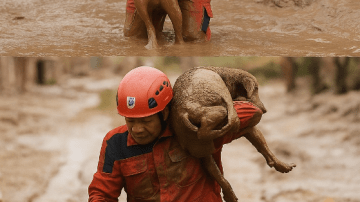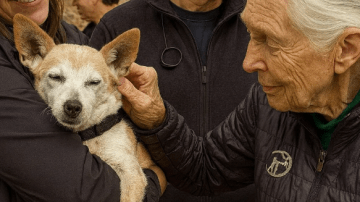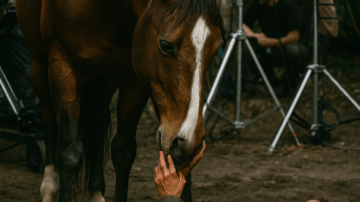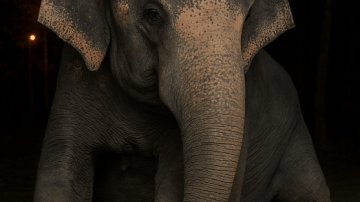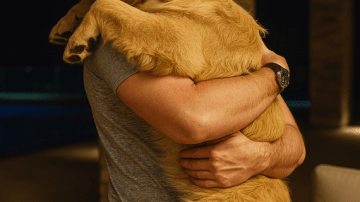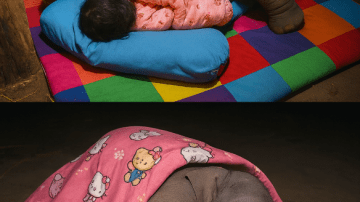It began in the stillness of the forest. A woodcutter, following the echo of faint cries, stumbled upon a sight that would change both his life and the life of the creature before him. Tied to a tree with a rough rope, injured and trembling, was a white dog. Her body was gaunt, her fur stained and carrying a foul smell. Wounds marked her fragile frame. She could not walk, could not even stand. She lay slumped in the dirt, her spirit nearly extinguished.
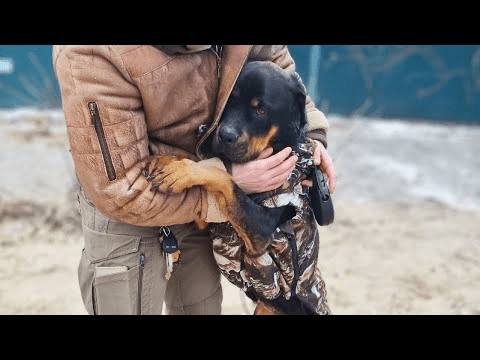
The woodcutter could not turn away. Gently, he untied the rope, lifted her into his arms, and carried her out of the forest. For a full kilometer, he bore her weight, despite the odor and the weakness that clung to her. Once home, he bathed her wounds, applied medicine, and wrapped her in a soft blanket. For the first time in days—perhaps weeks—she was safe.
But questions haunted him. Why had someone tied her to that tree? What had happened to leave her body so broken? The MRI scans at the veterinary hospital gave answers none of us wanted. Her spine had been injured, leaving her with paralysis. The nerve deterioration was classified at level four. She had pneumothorax, heart issues, and constant breathing difficulties. The doctors suspected blunt trauma—her injuries were consistent with being struck violently, leaving bruises, spinal damage, and collapsed lungs. Whoever tied her to that tree had done so because they didn’t want her to escape. She had been abandoned to die.
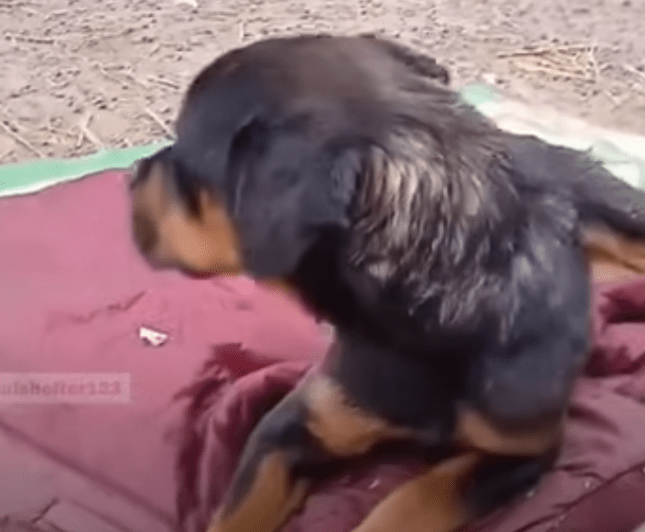
And yet, there was still a fragile thread of hope. The doctors believed that with intensive therapy, she might one day walk again. The days that followed were some of the hardest. Sweat, tears, and endless effort filled every moment. The dog was exhausted, her body fighting against pain, but she did not surrender. Every attempt she made was extraordinary. Step by painful step, she inched toward recovery.
After a month, a miracle came. She managed to stand, even to take a few unsteady steps. Her legs were still weak, but she was moving forward, determined not to let the cruelty of her past define her future. The woodcutter visited her often, his presence calming her. His kindness, as much as the medicine, was part of her healing. It mended not just her body, but her broken trust.
Still, the invisible scars lingered. At night, she sometimes woke in terror, barking loudly as nightmares shook her fragile heart. She remembered the tree, the rope, the hopelessness. Healing is not only of the body, but also of the soul. The woodcutter understood this. He brought her toys, gifts from kind strangers who had learned her story. She chased them clumsily, her tail wagging. Slowly, joy began to replace fear.
But the greatest gift he gave her was himself. He had carried her when she could not walk, stayed by her side when others had abandoned her. He had been her rescuer, her protector, her companion. She knew it. Her eyes followed him everywhere, full of gratitude. Whenever she saw him, she ran—or stumbled—toward him with all the strength she could gather, pressing her head against his chest. She feared losing him, clung to him as if to anchor herself in this new life.

One day, with emotion thick in his voice, he gave her a new name: Aurora. Like the northern lights, she was a symbol of beauty born from darkness, a miracle shining after the coldest night. Beside him, she was like a child—hugging him whenever she could, gazing at him as if he were her entire world.
We reported her case to the authorities, who began their investigation. We wanted to know who had left her in the forest and why they had chosen such cruelty. Perhaps the answers would never come, but one thing was certain: Aurora would never again be abandoned.
With time, her transformation was astonishing. The once-skeletal dog gained weight, her fur regained its sheen, and her steps grew stronger. The nightmares became fewer, replaced by moments of play and trust. The bond between Aurora and the woodcutter deepened. He had been her savior, but now he was something more—her family, her guardian, her friend.
For Aurora, life now seemed like magic. Every gentle touch, every warm bed, every bowl of food was a miracle. She had lived through cruelty, but her story did not end there. It became a story of second chances, of resilience, and of love stronger than fear.
Aurora’s journey reminds us that even in the darkest of places—a lonely forest, a cold rope, a body wracked with pain—light can appear. Sometimes, that light comes in the form of a stranger who refuses to look away, who chooses compassion over indifference. For Aurora, that light was the woodcutter who followed the sound of her cries and carried her into a new life.
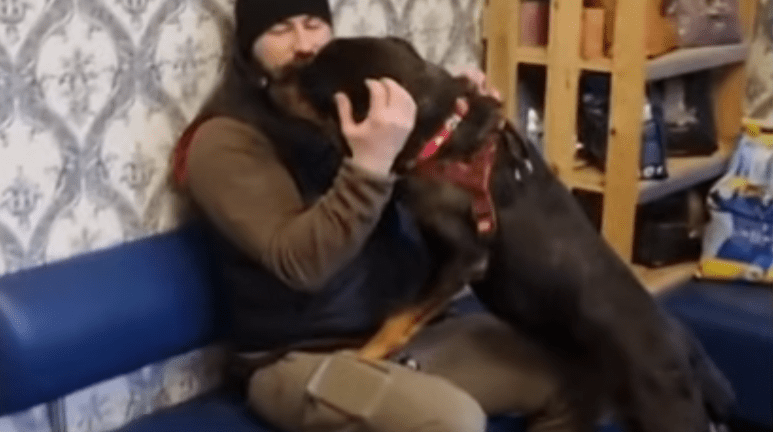
Today, Aurora walks with hope. She sleeps peacefully, plays with toys, and embraces the joy she once thought lost. She will never again be tied to a tree, never again face the silence of abandonment. She has found her place, and she will be safe for the rest of her days.

